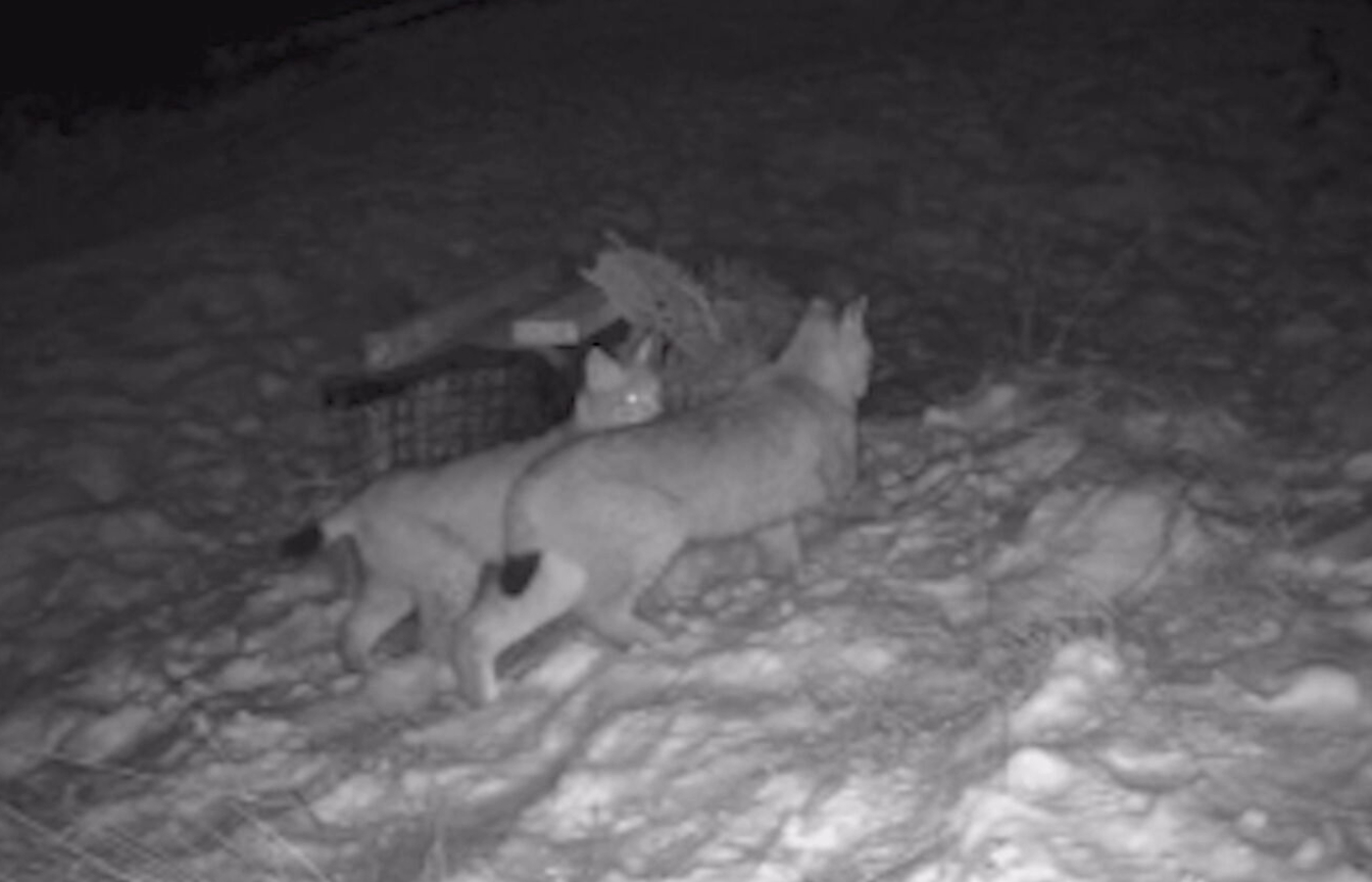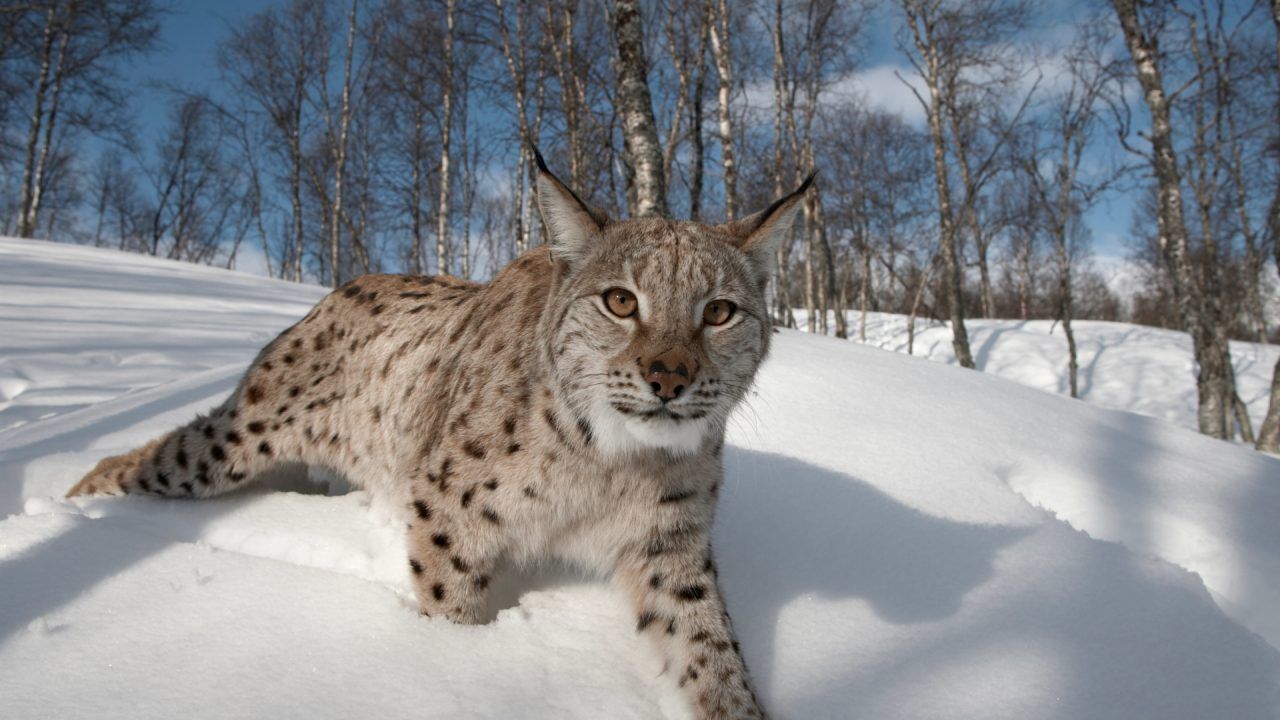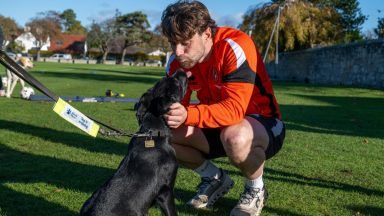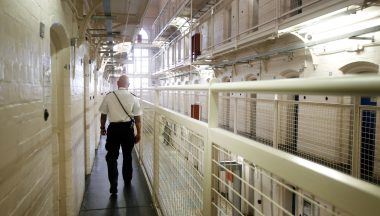Four illegally released lynx have been captured and others have reportedly been spotted roaming parts of Scotland so far this year.
In January, the wildcats were caught in the Cairngorms after being released near Kingussie in the Highlands.
Members of the public initially spotted two lynx on January 8 before they were captured overnight using humane traps.
The big cats, believed to be around a year old, were taken to the Highland Wildlife Park in Aviemore, where they are being held in quarantine before being taken to Edinburgh Zoo.
 STV News
STV NewsTwo more of the animals were spotted on a wildlife camera on January 9 before also being captured in Killiehuntly.
One of the lynx died. A post-mortem is due to take place.
On February 26, police said they were investigating potential sightings in Dumfries and Galloway in a wooded area near Newton Stewart.
Those who believe they may have seen lynx in the area have been urged to get in touch with the emergency services.
‘Tame and used to humans’
The Royal Zoological Society of Scotland said the lynx were “tamed and used to humans” and lacked the skills to survive in the wild.
Questions remain over how the animals came to be released in the wild and who is responsible.
Dr Jonny Hanson, environmental scientist and author of Living with Lynx, believes the animals were likely captive-bred in the UK.
He told STV News: “I think it would be extremely difficult to import smuggled live lynx into the UK.
“Reports would suggest that they’re captive bred and would probably not survive long in the wild because they’re probably not fully used to hunting wild prey.”
The native Eurasian lynx was made extinct in Scotland through hunting and habitat loss more than 500 years ago.
Lynx are described as a “keystone species” and said to play a vital role in maintaining healthy living systems, with biodiversity negatively affected by their absence.
The wild cats have been returned to European countries such as Germany, France and Switzerland and are said to be shy and elusive woodland hunters that pose no danger to people.
A number of rewilding charity groups have called for the reintroduction of the species into Scotland.
Research suggests the Highlands has the habitat to support around 400 sustainably.
From the Scottish Rewilding Alliance, Richard Bunting added: “We just don’t know where they came from. Were they released on purpose or were they pets? It’s very unusual and strange, we just don’t know.
“I’ve been working with the reintroduction movement for a long time. I can’t think of anything like this happening before”.
He said he hoped it was not someone who was part of the movement; “it could be someone who has pets and thought they could not keep them.”
“It’s really counterproductive for the movement, from animal welfare and legality point of view, across the board, it’s really unhelpful.”
Dr Hanson added: “I think it’s very damaging to the official process because it is something as controversial as the reintroduction of a large carnivore.
“For me, the importance of people in this, particularly farming and rural communities, the situation is just driving a bulldozer through the middle of the reintorduction process.”
Speaking last week, RZSS chief executive David Field said: “We condemn the illegal release of these lynx in the strongest possible terms.
“It was a highly irresponsible act, and it is very unlikely they would have survived in the wild due to a lack of adequate preparation.”
Police Scotland said enquiries to establish how the animals came to be in the area are ongoing.
Follow STV News on WhatsApp
Scan the QR code on your mobile device for all the latest news from around the country


 Scotlandbigpicture.com
Scotlandbigpicture.com























